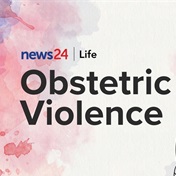- Earbuds and headphones play a significant role in our everyday lives.
- However, using them at very high volumes can cause hearing loss.
- Experts say there is a general rule of thumb when it comes to a safe volume level.
Earbuds and headphones have become an indispensable part of our daily lives. Whether you want to disconnect from the outside world, optimise the sound quality of a movie you’re watching, or free up your hands during calls, it’s not hard to see the benefits and practicality of having them.
But with the rise of earbuds and headphones, experts have also cautioned against using them at high volumes as this may lead to noise-induced hearing loss (NIHL).
According to the Cleveland Clinic, research studies show that NIHL affects 26 million adults between the ages of 20 and 69. While attending loud concerts or working in a noisy environment contribute to these figures, listening to music through earbuds or headphones at high volumes are one of the main causes of NIHL.
But is one worse than the other?
READ MORE | Youth risk hearing loss due to loud music
Earbuds vs headphones
Experts say, contrary to popular belief, earbuds don’t cause more damage to your hearing than headphones.
“The misconception stems from the thought that, because an earbud sits farther into your ear, it would do more damage than something that sits farther away,” Cory Portnuff, an audiologist at the University of Colorado Hospital, told the New York Times.
“What actually matters is the volume at your eardrum, not where it comes from,” says Portnuff.
READ MORE | Awareness about hearing loss raised as critical
Not sure if the volume in your earbuds is too loud? There’s a simple rule of thumb you can use to measure this, say hearing experts.
“It’s called 80 for 90 — you can safely listen at 80 per cent of the max volume for a total of 90 minutes a day,” says Portnuff.
Other experts are slightly more cautious in their recommendations. Dr Daniel Fink, an internist and board chair of The Quiet Coalition, a non-profit dedicated to reducing the effects of noise on health, tells the Times: “There is no such thing as a safe headphone.”
When you increase the volume of our earbuds to block out loud, external noise, you are likely exceeding the 80 for 90 recommendation, “and you’re giving yourself enough sound pressure, enough decibels to damage your hearing,” he says.
Fortunately, there’s a common sense approach to using your earbuds and headphones safely.
READ MORE | ‘Invisible epidemic’ probed
“Listen at the lowest level possible that allows you to hear the content that you want to listen to,” Fink said. “If it sounds loud, it’s too loud.”
Audiologist Dr Sharon Sandridge told the Cleveland Clinic: “It really is an inverse relationship between how long and how loud. If you are listening for an amount of time longer than 90 minutes, the volume should be reduced so that the longer you listen, the lower the volume.”
She adds that repeated damaging sounds can age your ear 50% faster, so much so that by the time you’re in your 50s, you may have the hearing of someone who’s in their 80s.
Sandridge advises: “If someone who’s standing an arm’s length away can hear the music coming from your headphones or earbuds, or if you raise your voice to speak to someone while you’re listening to something, it’s too loud.”




 Publications
Publications
 Partners
Partners












